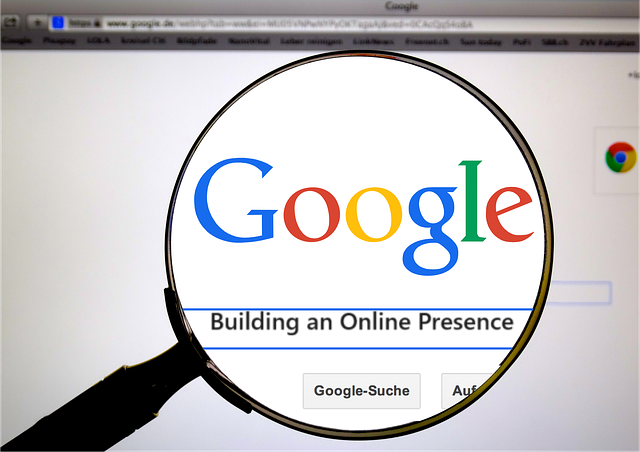In today’s digital age, the freelance economy is booming. More professionals are choosing to work independently, drawn by the flexibility and autonomy that freelancing offers. However, with this freedom comes the challenge of standing out in a crowded marketplace. This is where creating a personal brand as a freelancer becomes crucial.
A strong personal brand not only sets you apart from the competition but also establishes your credibility and helps attract the right clients. In this article, we’ll explore the steps you need to take to create a compelling personal brand as a freelancer.

1. Understanding the Importance of a Personal Brand
Before diving into the process of building your brand, it’s essential to understand why it matters. Your personal brand is more than just a logo or a catchy tagline; it’s the perception that others have of you based on your online presence, work ethic, and professional interactions. A well-defined personal brand can:
- Enhance Credibility: A strong brand signals professionalism and expertise, making it easier for potential clients to trust you.
- Attract Ideal Clients: By clearly communicating who you are and what you offer, you can attract clients who align with your values and skills.
- Differentiate You from Competitors: In a saturated market, your brand helps you stand out, highlighting what makes you unique.
- Facilitate Networking: A recognizable brand can open doors to new opportunities, collaborations, and connections.
2. Defining Your Niche and Target Audience
The first step in creating a personal brand is to define your niche. Your niche is the specific area of expertise or service you offer. It’s important to choose a niche that not only aligns with your skills and passions but also has a demand in the market.
Identifying Your Niche:
- Self-Assessment: Reflect on your strengths, passions, and experience. What do you enjoy doing most? What are you best at?
- Market Research: Investigate the market to see where your skills are most needed. Look at trends, client needs, and areas with less competition.
- Client Feedback: If you’ve already been freelancing, review feedback from past clients to identify what they value most in your work.
Defining Your Target Audience: Once you’ve identified your niche, it’s time to define your target audience. Your target audience is the specific group of people or businesses that are most likely to need your services.
- Demographics: Consider factors such as age, gender, location, and income level.
- Psychographics: Think about the interests, values, and challenges of your ideal clients.
- Behavioral Traits: Identify the purchasing behavior and decision-making processes of your target audience.
By understanding your niche and target audience, you can tailor your branding efforts to resonate with the right people.
3. Crafting Your Brand Message
Your brand message is the core of your personal brand. It’s what you want your audience to know and remember about you. A strong brand message should be clear, concise, and consistent across all platforms.
Elements of a Brand Message:
- Value Proposition: What unique value do you offer? This should be a concise statement that communicates the benefits of working with you.
- Mission Statement: What is your purpose as a freelancer? What do you aim to achieve for your clients?
- Brand Voice: How do you communicate with your audience? Your brand voice should reflect your personality and resonate with your target audience.
Crafting a Tagline: A tagline is a short, memorable phrase that encapsulates your brand message. It should be simple yet powerful, giving potential clients an immediate sense of what you offer.
4. Creating a Visual Identity
Your visual identity is the visual representation of your personal brand. It includes elements such as your logo, color scheme, typography, and overall design aesthetic. A consistent visual identity helps to reinforce your brand message and makes you more recognizable.
Designing a Logo: Your logo is the cornerstone of your visual identity. It should be simple, professional, and reflective of your brand’s personality. If design isn’t your strength, consider hiring a professional designer to create a logo that aligns with your brand.
Choosing a Color Scheme: Colors evoke emotions and can influence how your brand is perceived. Choose a color scheme that reflects your brand’s values and resonates with your target audience. For example, blue often represents trust and professionalism, while yellow conveys optimism and creativity.
Selecting Typography: Typography plays a significant role in your brand’s visual identity. Choose fonts that are easy to read and consistent with your brand’s personality. For instance, serif fonts can convey a sense of tradition and reliability, while sans-serif fonts are often seen as modern and clean.
Consistency Across Platforms: Ensure that your visual identity is consistent across all platforms, including your website, social media profiles, and marketing materials. Consistency helps to strengthen your brand and make it more memorable.

5. Building an Online Presence
In today’s digital world, a strong online presence is essential for freelancers. Your online presence is how potential clients discover, learn about, and connect with you. Here’s how to build and maintain an effective online presence:
Creating a Professional Website: Your website is the hub of your online presence. It should clearly showcase your services, portfolio, testimonials, and contact information. Ensure that your website is easy to navigate, mobile-friendly, and optimized for search engines (SEO).
Leveraging Social Media: Social media platforms are powerful tools for building your personal brand. Choose platforms that align with your target audience and consistently share content that reflects your brand message. Engage with your followers, share valuable insights, and showcase your work.
Blogging and Content Creation: Creating valuable content is a great way to establish yourself as an expert in your field. Start a blog on your website and regularly publish articles that provide insights, tips, and advice related to your niche. You can also create videos, podcasts, or infographics to reach a broader audience.
Networking and Community Engagement: Join online communities, forums, and groups where your target audience hangs out. Participate in discussions, offer advice, and connect with other professionals in your industry. Building relationships with others in your field can lead to referrals, collaborations, and new opportunities.
6. Showcasing Your Expertise
To build a strong personal brand, it’s essential to showcase your expertise. This not only demonstrates your skills and knowledge but also builds trust with potential clients.
Building a Portfolio: Your portfolio is a collection of your best work that demonstrates your capabilities. Include a variety of projects that showcase different aspects of your expertise. If you’re just starting, consider creating sample projects or offering discounted rates to build your portfolio.
Collecting Testimonials: Testimonials are powerful tools for building credibility. Reach out to past clients and ask for testimonials that highlight the value you provided. Display these testimonials prominently on your website and social media profiles.
Speaking and Guest Posting: Consider speaking at industry events, webinars, or podcasts to share your knowledge with a wider audience. Guest posting on reputable blogs or websites in your niche can also help you reach new clients and establish yourself as an authority.
7. Consistency and Authenticity
Consistency and authenticity are key to building a successful personal brand. Your brand should reflect who you are, not who you think your audience wants you to be. Stay true to your values, and consistently deliver on your brand promise.
Consistency in Communication: Whether it’s through social media posts, emails, or client interactions, ensure that your communication style and messaging are consistent. This helps to reinforce your brand and build trust with your audience.
Authenticity in Branding: Your personal brand should be a genuine reflection of who you are. Don’t try to imitate others or present a false image. Authenticity resonates with clients and helps to build long-lasting relationships.
8. Adapting and Evolving Your Brand
As you grow and evolve as a freelancer, your personal brand should evolve too. Stay open to feedback, and be willing to adapt your brand as needed to stay relevant and aligned with your goals.
Regularly Reviewing Your Brand: Periodically review your brand to ensure it still aligns with your goals and resonates with your target audience. This could involve updating your website, revising your brand message, or refreshing your visual identity.
Staying Relevant: Keep up with industry trends and continuously develop your skills. Staying relevant ensures that your brand remains competitive and attractive to potential clients.
Embracing Change: As your career progresses, you may decide to pivot to a new niche or target a different audience. Embrace these changes and update your brand accordingly to reflect your new direction.
Conclusion
Creating a personal brand as a freelancer is an ongoing process that requires self-reflection, consistency, and a commitment to authenticity. By defining your niche, crafting a compelling brand message, building a strong online presence, and showcasing your expertise, you can create a brand that not only attracts your ideal clients but also sets you up for long-term success. Remember, your personal brand is your reputation—nurture it with care, and it will open doors to new opportunities and growth in your freelance career.


